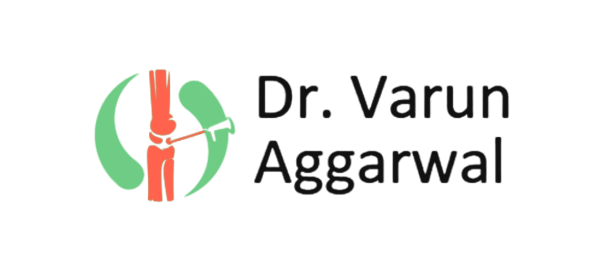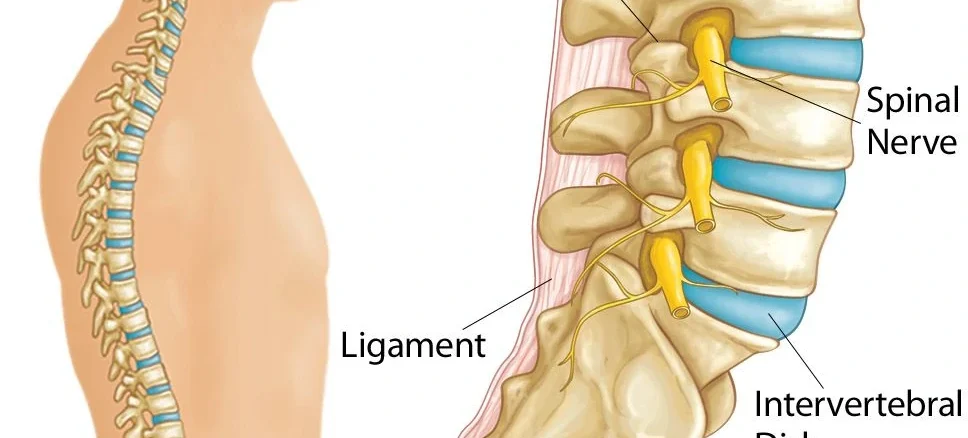The spine may appear to be a single solid but flexible element of the body to you, but in reality, it is made up of several small moving parts that function together to achieve the desired motion. The thoracic spine has twelve bones, the cervical spine has seven, and the lumbar spine has five, with the sacrum and coccyx at the bottom. Discs are shock absorbers for the spinal bones, present between each vertebra in the spinal column.
A herniated disc (also known as bulged, ruptured, or slipped disc) is a disc nucleus fragment that has been pushed out of the annulus and into the spinal canal due to a tear or rupture in the annulus. A herniated disc is a common but painful and debilitating disease. Some patients, however, do not feel any pain, especially if the disc is not pressing on any nerves. In some situations, it might cause numbness, pain, or weakness in the limbs. In this blog, I will provide you details on the symptoms, prevention and treatment of herniated discs. So, stay here with me.
Who Is More Likely To Get Herniated Disks?
People in their 30s to 50s are most likely to suffer from herniated discs. Men are twice as likely as women to be affected by this issue. Some other things that make someone more likely to get herniated disks are:
- People with heavy body weight
- Continually sitting in one place for an extended period.
- Smoking.
- Pick up heavy stuff.
- Repeating bending or twisting motions in sports, at work, or during exercise.
Methods To Prevent A Slipped Disc
You can make some efforts to lower your chances of acquiring Herniated disks. Some of the most effective methods to lower your likeliness of having slipped disk are as follows:
- Maintain a healthy body mass index (BMI).
- Make sure you use proper lifting techniques from your knees instead of your waist.
- Strengthen the muscles in your back, belly, and legs by workout.
- Get up and stretch often if you’ve been sitting for a long time.
Symptoms Of A Slipped Disc
A slipped disc can occur anywhere in your spine, from your neck to your lower back. However, herniated disks are most commonly found in the lower back. The blood vessels and nerves in your spinal column form a complex network. A slipped disc can put additional strain on the nerves and muscles in the area. The symptoms of slipped discs differ from one person to the next. If your pain causes numbness or tingling that interferes with your ability to control your muscles, you should consult a doctor asap.
Symptoms of a slipped disc include:
- Pain and numbness on one side of the body.
- Pain in the arms and legs.
- Pain that gets worse when you move around or at night.
- Standing or sitting causes pain.
- Short-distance walking causes pain.
- Muscle weakness.
- Feel aching, tingling, or burning.
Nonsurgical Treatment Options for Herniated Discs
The majority of patients with herniated discs react favourably to non-surgical treatment and do not need surgery. Here is the list of a few non-surgical treatments you can do to feel better-
Low-Impact Activities
Although bed rest may seem appealing, it can lead to increased muscle stiffness and weakness. So, try to indulge in low impact activities.
Don’t Smoke
Smoking is a key risk factor for degenerative disc disease, especially in the lower back and neck, in addition to contributing to chronic disease. So, stop smoking.
Reduce Extra Weight
Excess weight can aggravate compression in the spine, so losing a few kilograms could help you feel better.
Core Exercises
Your “girdle” of core-muscle support in your belly and lower back should be strengthened. So, your doctor can recommend exercises that are safe for you.
Epidural Steroid Injection
ESI injections are less invasive forms of treatment you may be recommended by your doctor to reduce inflammation in the affected nerve. Relief normally lasts three months, which may be enough time for your back to heal without the need for a second injection.
What Surgical Procedures Treat Herniated Discs?
If you’ve tried every nonsurgical method and are still experiencing difficulties, surgery is the best option. It’s usually a quick outpatient treatment that hardly takes one hour. In the last few years, spinal surgery has progressed significantly. Most patients are able to return home the same day, and in most cases, within a few hours of the treatment.
A slipped disc can be treated in one of two ways.
Microdiscectomy
It is also referred to as microdecompression. To relieve strain on the spinal column, this technique involves removing parts of the disc.
Laminectomy
During a laminectomy, a part of the spinal bone is removed. As a result, the spinal cord and nerves can move freely without being pressed.
For herniated discs in the cervical spine, there are two extra choices-
Cervical disc replacement (CDR) or anterior cervical discectomy and fusion (ACDF). Both the ACDF and CDR procedures involve removing the problematic disc and stabilizing the area with a bone graft (ACDF) or artificial disc (CDR).
Micro Lamino Foraminotomy
This surgery involves the removal of a little piece of bone from the vertebra to make room for the pinched nerve during this procedure.
Most patients get immediate relief from symptoms such as numbness, pain, and weakness after either procedure. The nerves, on the other hand, may take several weeks or months to fully heal.
Click here to contact for more information


